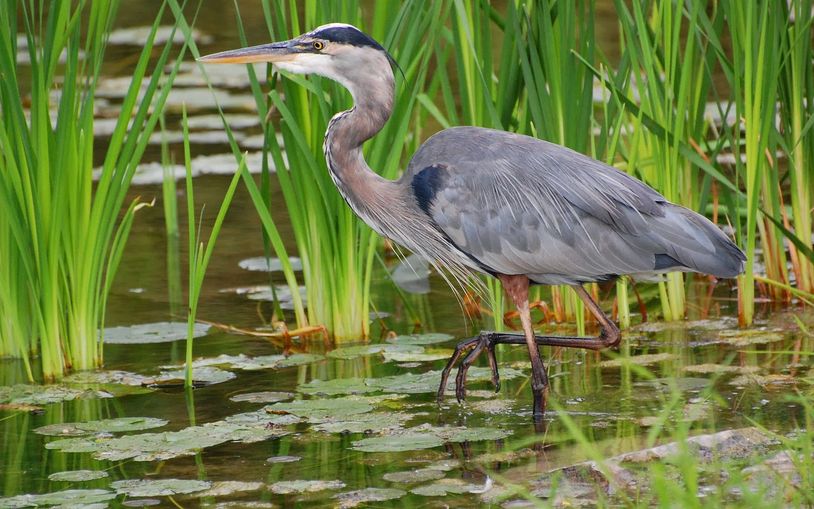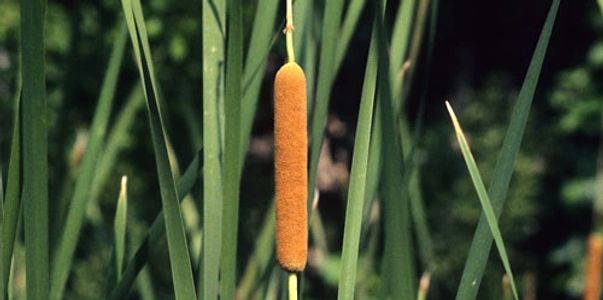(352) 289-0763 or toll free (888) 726-3888

Welcome to Watertraxx.com
Welcome to Watertraxx

Who we are
Watertraxx, LLC is an eco-friendly waterway, pond and lake management service located in Ocala, Florida, specializing in the mechanical clearing of weeds, reeds and aquatic plants that are invasive or have taken over a pond, lake or waterway. Our specially designed vehicle limits, and in most cases omits, the need for herbicide use, helping to protect the environment and aquatic life.
Our Mission
Responsible eco-friendly aquatic plant removal, while providing honest, prompt, quality service to our customers.
Services we provide
- Mechanical clearing of aquatic weeds underwater and along shorelines.
- Mechanical removal of floating plants and cleared debris.
- Mechanical raking and removal of roots from the bottom of waterways

.
About Us
We are Michael & Cathy Trickel, both native Floridians and the owners of Watertraxx, LLC. Mike is an unlimited master mariner and I am a R.N. with a love for the water, animals and wildlife. After a 38 year career in energy services, Mike drove tour boats on a prominent Florida river & saw the effects of herbicide use on plants, & wildlife, in an eco-sensitive environment. We were convinced there had be be a better way to deal with aquatic overgrowth and began searching for a method to remove aquatic plants and roots without the use of herbicides. Our solution was found in an amphibious tool carrier which we imported from the Netherlands. This machine is environmentally friendly and can get the job done when no other machine or method will work. Please contact us today. We are ready to help you solve your overgrown waterway problems.
Left uncared for, ponds, lakes & waterways become overgrown and unmanageable. Mechanical clearing is the environmentally safe, & eco-friendly answer to aquatic vegetation removal.

Our objective is to become your preferred service provider for protecting the environment and providing aquatic plant management.
Before and After
Did You Know?
Invasive Florida Aquatic Plants

Hydrilla
This submersed plant native to Africa and Southeast Asia is a major aquatic weed throughout most of the world’s warmer climates. Hydrilla was introduced into Florida in the early 1950s and by the early 1990s occupied more than 140,000 acres of public lakes and rivers. Intensive interagency management has reduced the above ground portions of hydrilla to under 50,000 acres. However, once established, hydrilla produces reproductive tubers numbering in the millions per acre in the soils of Florida waterways. These tubers still impact nearly 140,000 acres and represent hydrilla’s regrowth potential, if not continually managed immediately after sprouting. Researchers have not discovered methods to prevent or minimize tuber formation. Hydrilla can grow an inch or more per day and can be found in water only a few inches deep to the deepest parts of Florida’s lakes and rivers. In Florida, hydrilla produces dense canopies covering entire surfaces of waterbodies within one or two years after it becomes established. Hydrilla disperses quickly throughout a waterway by stem fragments, buds, runners and tubers.

Water Hyacinth
This native of South America is now considered a major weed species in morethan 50 countries.
The growth rate of water-hyacinth is among the highest of any known plant. In Florida, water-hyacinth populations can double their size in as little as two weeks by sending off short runner stems that develop new plants (daughter plants). Water-hyacinth also has the ability to reproduce by seeds.
Why water-hyacinth must be managed:
Water-hyacinth blocks waterways and limits boat traffic, recreation, flood control and wildlife use. By producing a dense canopy at the water surface, this exotic pest plant shades out native submersed plant species and can uproot native emergent species that are important to wildlife.
Environmental damage caused by water-hyacinth populations:
Water-hyacinth mats lower dissolved- oxygen concentrations, damaging fish populations. One acre of water-hyacinth can deposit as much as 500 tons of rotting plant material on the bottom of a waterway yearly. Water-hyacinth mats can increase flooding in rivers and canals by forming dams. Water-hyacinth mats provide ideal breedingenvironments for mosquitoes.
Water-hyacinth populations decrease biodiversity in Florida.
Because of its aggressive growth rate, water-hyacinth is illegal to possess in Florida without a special permit. Water-hyacinth also has the ability to reproduce by seeds.

Water Lettuce
This floating plant native to South America is considered to be one of the worst weeds in the subtropical and tropical regions of the world. In Florida, it was first recorded in 1765; its introduction is linked to early shipping commerce between Florida and South America. Because of intensive statewide management efforts, water- lettuce populations are maintained at low population densities. Under optimal environmental conditions, water-lettuce can double its population size in less than three weeks. Seed production makes this plant resilient to adverse environmental conditions such as freezing temperatures and drought.
Why water-lettuce must be managed: Water-lettuce populations often form large expanses of dense, impenetrable floating mats limiting boat traffic, recreation flood control and wildlife use. These dense canopies at the water surface shade out native submersed plant species and can uproot native emergent plants that are important to wildlife. Environmental damage caused by water- lettuce populations:
Water-lettuce mats can lower dissolved oxygen concentrations reducing aquatic life. Dense populations may lower water levels because water-lettuce increases evaporation rates over open water areas. Water-lettuce mats can restrict water flow increasing flooding along rivers and canals. Dense water-lettuce populations produce ideal breeding environments for mosquitoes. Water-lettuce populations crowd out native plants and animals (lowers biodiversity).Because of its aggressive growth rate, water-lettuce is illegal to possess in Florida without a special permit.
Cattails

Cattails are wetland plants with a unique flowering spike, flat blade like leaves that reach heights from 3 to 10 feet. They are one of the most common plants in large marshes and on the edge of ponds. Two species are most common in US: broad leaved cattail (T. latifolia) and narrow leaf cattail (T. angustifolia).
Under the right conditions, cattails can grow and spread vigorously. The pollinated flowers develop into fluffy seed heads, blowing across a pond in autumn breezes. Just as commonly, cattails spread through their root system. The thick, white roots, called rhizomes, grow underground near the edge of ponds and in shallow swales. As long as the water is not too deep, the cattails feast off the open sunshine and abundant water, storing a large amount of food in the root system. In fact, cattails at the edge of pond can grow faster than fertilized corn in a field! The dense foliage and debris from old growth makes it very difficult for competing plant species to grow. Cattails prefer shallow, flooded conditions and easily get established along a pond shoreline or in waters one to 1.5 feet or less in depth.
FAQs

Frequently asked questions:
What is your amphibious machine capable of?
It can work on land and in any depth of water. It can mow above and below the water, cut horizontally and vertically, as well as rake up cut debris.
Can it remove cattails?
Our machine's cutter & rake are the perfect tools for removing cattails.
Can it remove water hyacinth and water lettuce?
Water hyacinth & water lettuce are some of the most easily dealt with water plants. The vertical cutter is used to cut, the machine drives across the hyacinth or water lettuce to break up the mats into more manageable sizes, and the rake is then used to remove the debris.
Can it remove hydrilla?
Hydrilla that has not formed a mat on the surface can be mowed to a water depth of 4 feet. The debris will then float to the surface and be removed with the rake. If a mat has been formed on the surface of the water, a vertical cutter is used to break up the mats and then the rake used to lift the mats and move them to the shoreline. Removing the mats in this manner will also pull the roots out of the mud, resulting in less regrowth.
What about pricing?
We provide an estimate for each job based on the amount of clearing to be done and level of cleaning requested.
We accept all major debit and credit cards, as well as Apple Pay and Google Pay
Contact Us
Drop us a line today!
Better yet, give us a call!
We love our customers, so feel free to call during normal business hours.
Watertraxx, LLC is Licensed & Insured
We accept all major debit and credit cards as well as Apple Pay & Google Pay
Hours
Mon | 8:00 – 18:00 | |
Tue | 8:00 – 18:00 | |
Wed | 8:00 – 18:00 | |
Thu | 8:00 – 18:00 | |
Fri | 8:00 – 18:00 | |
Sat | Closed | |
Sun | Closed |















